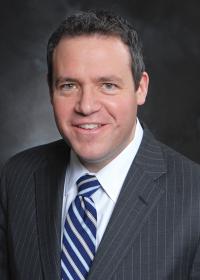The Patent Trial Lawyer and Professor
Spring
2016
Spotlight on Hidden Physicists
The Patent Trial Lawyer and Professor
Bruce Wexler, Partner, Litigation Department, Paul Hastings, LLP in New York, NY
By:Bruce Wexler, Partner, Litigation Department, Paul Hastings, LLP in New York, NY Sigma Pi Sigma Rensselaer Polytechnic Institute Chapter, Class of 1989
 Throughout my childhood and continuing into high school, I loved and excelled at science and math. When it came time for college, I thought about engineering, but my true passion was pure science. So I went early decision to Rensselaer Polytechnic Institute (RPI), where I majored in physics.
Throughout my childhood and continuing into high school, I loved and excelled at science and math. When it came time for college, I thought about engineering, but my true passion was pure science. So I went early decision to Rensselaer Polytechnic Institute (RPI), where I majored in physics.
I was not completely sure of my future in physics, but I figured I would see where things took me. The study of physics was intellectually challenging and completely fulfilling, and I made sure to take a broad variety of coursework outside my major, such as electives in chemistry and biology. I also minored in psychology, for really no other reason than I found the subject matter intriguing.
In my third year of college, a brother in my fraternity (Sigma Phi Epsilon) told me about patent law. I knew nothing of the law at the time, but it sounded fascinating. I decided to let fate decide: I would take the LSAT entrance exam, and if I got into a good law school I would go. I wound up attending New York University School of Law.
The most shocking thing about law was that there was no “correct” answer. The law was about analyzing human behavior through a lens of history, logic, precedent, and reason, and creating arguments for the right answer. Physics had been an excellent training ground, since it is fundamentally about thinking creatively to solve complex puzzles.
I graduated magna cum laude from NYU and was offered a job as a law clerk to the chief judge of the Court of Appeals for the Federal Circuit in Washington, DC, the court that hears all appeals in United States patent cases. As a judicial law clerk, I worked on decisions that have shaped patent law, including the case that articulated the process for interpreting patent language—Markman v Westview Instruments, Inc.—in which the court held that judges, not juries, would evaluate and decide the meaning of the words used in patent claims.
After my clerkship, I joined an intellectual property boutique law firm where I eventually became a partner. In 2006, one of my partners and I left in order to start a life sciences patent litigation practice within a large general practice firm, Paul Hastings, LLP. We built the practice from the ground up and now have over 40 lawyers in our group focused on life sciences patent law. Our cases are multimillion- or multibillion-dollar matters involving chemistry, biology, and physics. Every day I use the tools I honed in my study of physics and continue to learn new science for each of my cases.
Most recently, I have returned to NYU, now as an adjunct professor of law, teaching life sciences patent litigation. My students are, for the most part, former scientists. The class combines discussions of science, law, and social policy.
Physics was not an easy major. I remember trying to teach myself vector calculus so I could solve problems in an advanced mechanics class, all the while thinking about what life might have been like if I’d taken an easier path. But for those of us who love challenges, taking the easiest path is, to be blunt, boring. The study of physics trains you to think in a way that lets you take on and conquer intellectual challenges. So whatever path you ultimately follow, you will have the power not just to succeed, but to do so with a deep understanding of the physical world, which keeps everyday life interesting.
